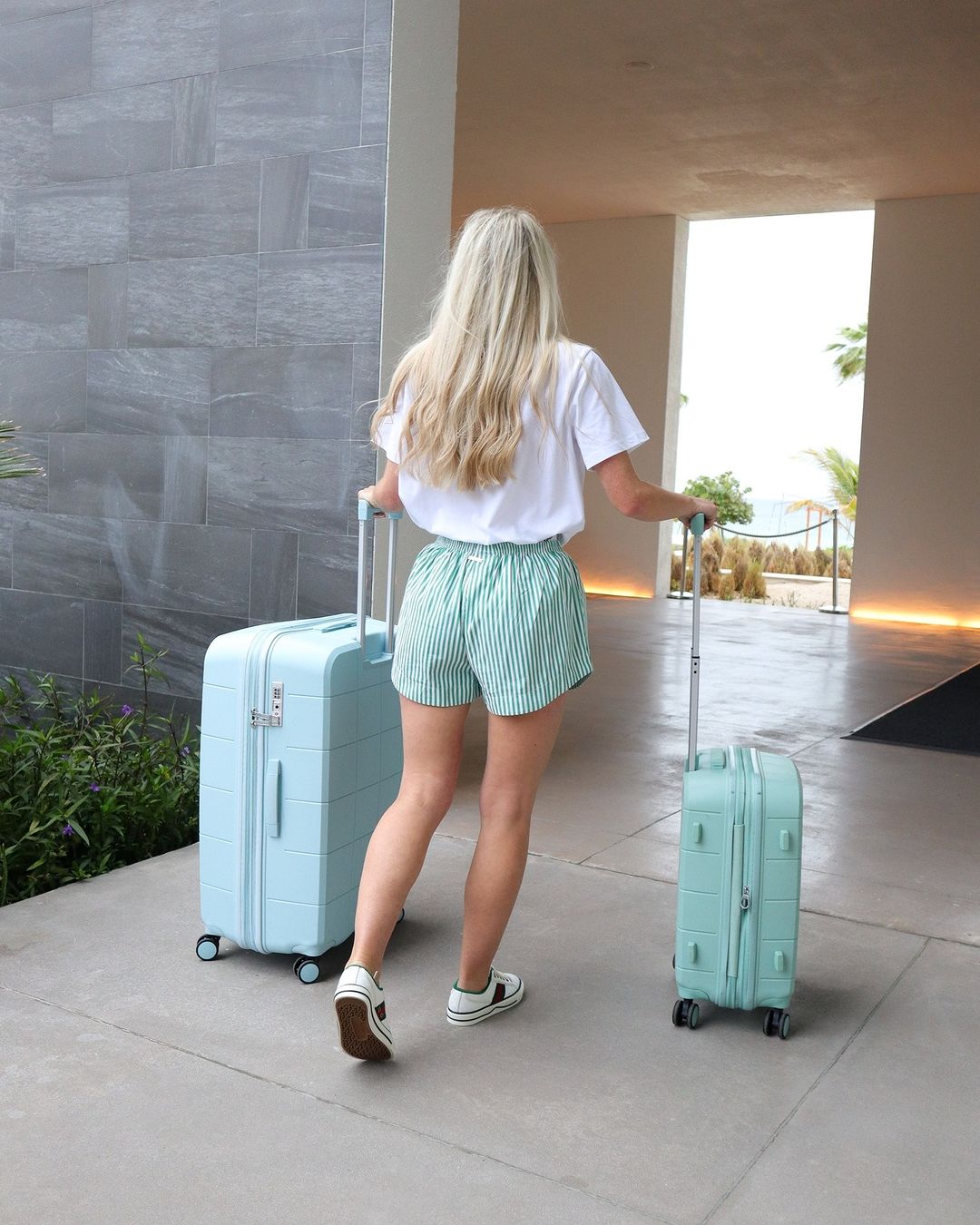
The Science Behind Lightweight Luggage: What Materials Matter?
, by Carolina UC, 4 min reading time

, by Carolina UC, 4 min reading time
Discover the science of lightweight luggage. Learn about the best materials like polycarbonate, aluminium, and ballistic nylon that offer durability without the bulk.
Introduction
When it comes to travel, every kilo counts. From dodging airline weight limits to effortlessly wheeling your suitcase through the airport, lightweight luggage is a modern traveller's dream. But what exactly makes some luggage lighter yet still strong enough to handle the rigours of global adventures? The answer lies in the materials. Let's unpack the science behind lightweight luggage and explore what really matters.
Polycarbonate Shells

Polycarbonate is one of the most popular choices for hardside luggage. It's a thermoplastic known for being exceptionally lightweight yet extremely tough. This material has a bit of give, so it can absorb impacts without cracking, making it ideal for the rough-and-tumble world of baggage handling. Plus, it holds its shape well, which adds a sleek, modern aesthetic to your suitcase.
ABS Plastic Use
ABS (Acrylonitrile Butadiene Styrene) plastic is another common material used in hardside luggage. It's cheaper than polycarbonate and still fairly light, but it doesn't offer the same level of durability or flexibility. ABS is often used in budget luggage or combined with other materials to bring down costs while keeping weight manageable.
Aluminium Frames

Aluminium brings a luxurious and industrial strength to luggage design. While heavier than polycarbonate or ABS, it's often used in frames rather than the entire shell. Aluminium adds structure and security, especially in premium luggage ranges. The trade-off is that it can dent with hard knocks, but it gives an unmatched classy look and rigidity.
Nylon vs. Polyester
When it comes to softside luggage, nylon and polyester are the main contenders. Nylon is generally stronger and more abrasion-resistant than polyester, making it a better choice for frequent travellers. However, it also tends to be more expensive. Polyester, on the other hand, is cost-effective and still fairly durable, making it a solid option for casual use.
Ballistic Nylon Durability

Originally developed for military use, ballistic nylon is the tank of textile materials. It's a type of nylon with a very tight weave, giving it impressive tear and abrasion resistance. While heavier than standard nylon, it provides superior protection and longevity, making it a favourite for high-end travel gear.
Ripstop Fabric Benefits
Ripstop fabrics are woven in a way that prevents small tears from spreading. You’ll often find this in lightweight backpacks or softside carry-ons. It’s incredibly light but doesn't skimp on strength, thanks to its reinforced thread pattern. Ripstop nylon or polyester can be a game-changer if you need lightweight gear that can take a beating.
Impact Resistance Tech

Materials are only part of the equation. Impact resistance also depends on design. Many brands incorporate ridged shells or use double-layered materials to improve shock absorption. Some even use honeycomb structures within their panels to increase durability without adding weight. It’s all about clever engineering.
Weight-to-Strength Ratio
This is the golden metric for luggage materials. You want something that’s light enough to lift but tough enough to last. Polycarbonate has one of the best weight-to-strength ratios, closely followed by ripstop and ballistic nylon. It’s essential to find a balance depending on whether you prioritise weight savings, toughness, or cost.
Eco-Friendly Material Options

With sustainability on the radar, more brands are now using recycled materials or bioplastics in luggage design. Recycled PET bottles are being transformed into polyester fabric, and some brands are even exploring plant-based resins. While still a growing trend, eco-materials are making it easier to travel lighter on the planet.
Innovations in Composite Blends
Lastly, the future of lightweight luggage may lie in composite materials. By blending two or more materials—like polycarbonate with fibreglass or aluminium-reinforced polymers—manufacturers can fine-tune performance. These composites offer enhanced strength, flexibility, and reduced weight, all while looking sleek and stylish.
Conclusion
Understanding what your luggage is made of helps you make smarter travel investments. Whether you’re a frequent flyer or an occasional explorer, choosing the right materials can mean the difference between a suitcase that lasts a lifetime and one that falls apart on its first journey. Lightweight doesn’t mean flimsy if the science behind it is sound. So next time you’re suitcase shopping, check the label—it’s not just a bag, it’s engineering in motion.

ON YOUR ORDER WHEN YOU SIGN UP FOR EMAIL